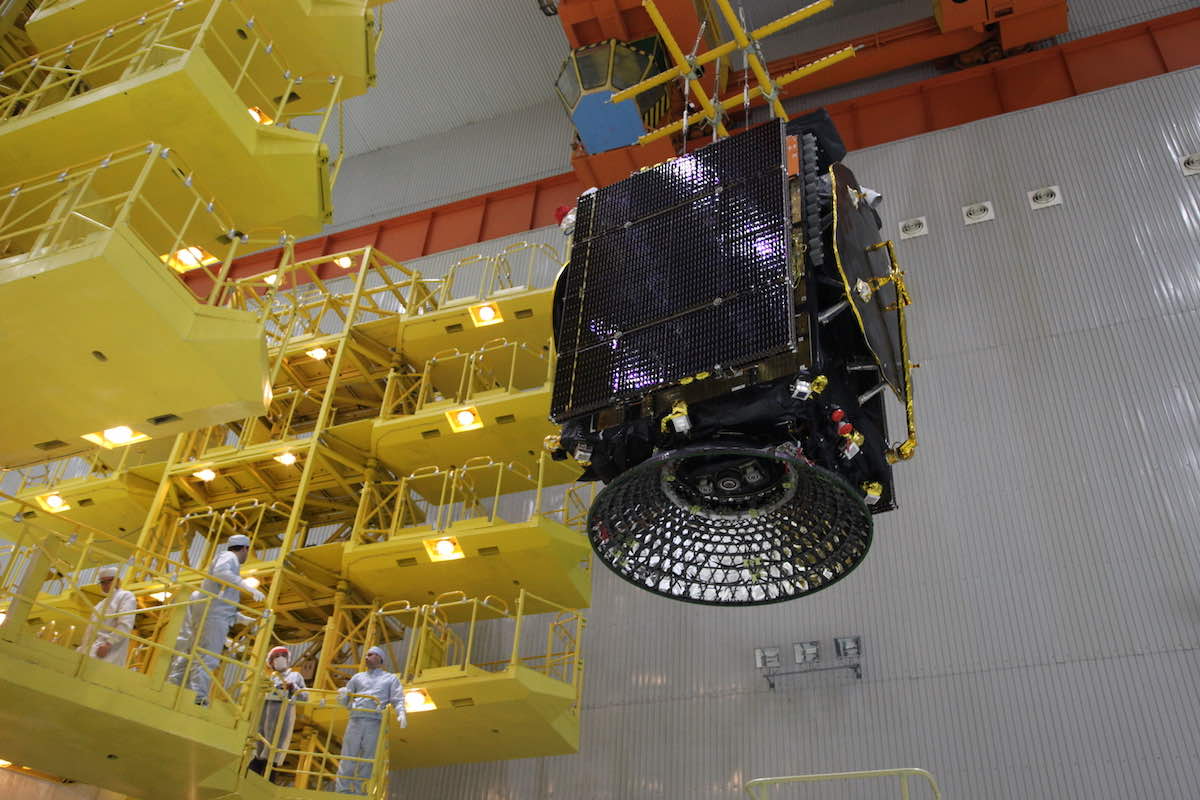A Russian rocket stage deployed two television and internet relay satellites into a high-altitude orbit 18 hours after liftoff Monday from the Baikonur Cosmodrome in Kazakhstan aboard a Proton rocket.
The Express AMU3 and Express AMU7 satellites rocketed into space from Baikonur at 7:07 a.m. EST (1207 GMT) Monday on top of a Proton launcher, running a day later than planned after troubleshooting of a technical issue on the rocket’s Breeze M upper stage.
The 191-foot-tall (58.2-meter) rocket quickly disappeared into a veil of clouds after a vertical climb away from Pad 39 at the Site 200 launch complex at Baikonur. Six RD-276 engines, burning hydrazine and nitrogen tetroxide propellants, powered the Proton off the ground with 2.5 million pounds of thrust.
The first stage detached two minutes after launch, followed by burns with the Proton’s second and third stages. A Breeze M upper stage then separated from the Proton third stage on a suborbital trajectory.
An initial firing of the Breeze M upper stage placed the rocket and its dual payloads into a parking orbit. Four more firings gradually raised its orbit and moved it closer to the equator from the initial path that took the Breeze M stage between 51 degrees north and south latitude.
The burns reshaped the rocket’s orbit reach an elliptical path around Earth ranging in altitude between 11,600 miles (18,700 kilometers) and nearly 32,900 miles (52,900 kilometers).

The 4,365-pound (1,980-kilogram) Express AMU7 satellite, situated in the upper position of the dual-payload stack, separated first from the Breeze M upper stage at 12:57 a.m. EST (0557 GMT) Tuesday.
The Express AMU3 spacecraft, with a launch weight of 4,740 pounds (2,180 kilograms), was released by the Breeze M upper stage at 1:14 a.m. EST (0614 GMT).
Both satellites carry plasma thrusters to circularize their orbits at geostationary altitude more than 22,000 miles (nearly 36,000 kilometers) over the equator about two months after launch.
Express AMU7 is heading for a position at 145 degrees east longitude, where it will replace the Express A4 communications satellite launched in 2002. Express AMU3 will settle into a geostationary parking spot at 103 degrees east longitude, replacing Express AM3, which has been in service since 2005.
Both satellites were built by ISS Reshetnev, a Russian spacecraft manufacturer, and are designed for missions lasting at least 15 years. They carry telecommunications payloads supplied by Thales Alenia Space of France.
Express AMU3 and AMU7 are outfitted with C-band, Ku-band, and L-band transponders. From its more western position, Express AMU3 will cover Central Russia, Kazakhstan, and other parts of Central Asia. Express AMU7’s coverage zone is centered on Siberia and Russia’s Far East.
The launch of Express AMU3 and AMU7 was one of few remaining flights confirmed to launch with Russia’s heavy-lift Proton rocket. It marked just the second Proton launch this year, following the liftoff of Russia’s Nauka lab module in July heading for the International Space Station.
The launch Monday was just the fourth Proton launch in nearly two years.
The Russian Express AMU3 and Express AMU7 communications satellites are designed to operate for the Russian Satellite Communications Co., a government-backed enterprise that manages Russia’s civilian telecom satellite fleet.
The new satellites will provide digital TV and radio broadcast services, high-speed internet connectivity, and other data transmission capacity over Russia and neighboring countries, according to RSCC.
Email the author.
Follow Stephen Clark on Twitter: @StephenClark1.
